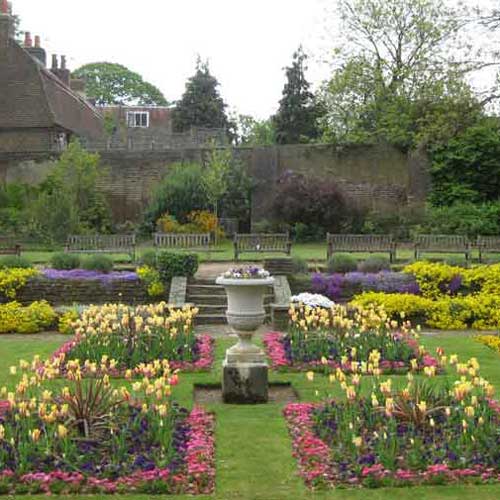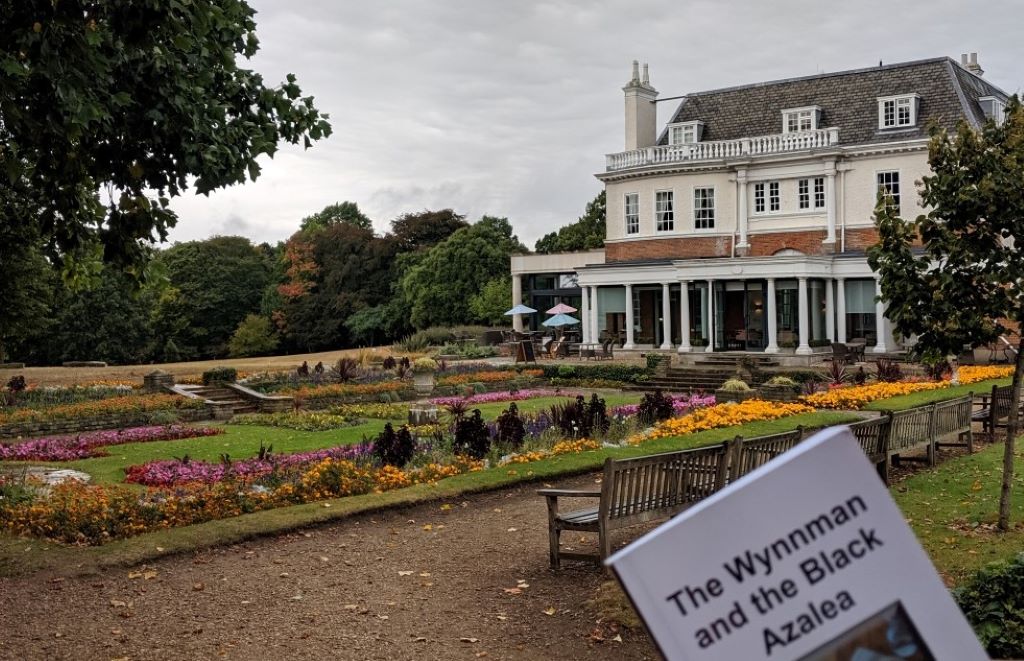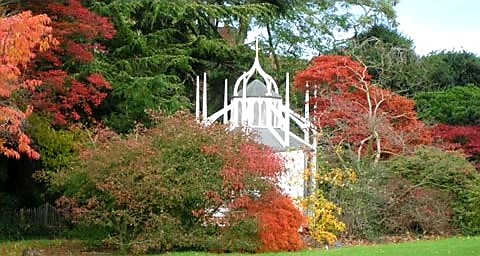As a writer, Trevor P Kwain discovered that SW19 has an amazing back story, much of which today is still untold. Through the people who came before us, Trevor’s first novel centres around the charming Cannizaro House. Today, he shares his love and fun fact filled history of the estate.
Once I had decided to write a mystery book series set in Wimbledon, I found a wealth of material on the town’s history. Spiritual séances in Worple Road, duels at dawn by the Windmill, beautiful Victorian buildings on Southside and even mysterious tunnels running under Wimbledon Hill. Despite all this, my eyes were fixed on one location that had tickled my curiosity since setting foot in Wimbledon, both for its unusual name and for its beauty.
Cannizaro Park, at over 400 years old, is the oldest park in existence today in SW19. It once covered a vast area from Caesar’s Camp, the Wimbledon Golf Course and in a southerly direction to Copse Hill. This area was defined in the 1570s when Thomas Cecil, one of the many Lords of the Manor of Wimbledon, needed a new area for deer hunting. He called it the “Old Park” , and that nickname stuck for a couple of centuries until census records and survey maps showed a name change in the mid-nineteenth century. By then, the park had passed through the hands of many owners and one in particular, William Browne, built two large houses on the estate in the early 1700s. One of these was named “Warren House”, later to be known as “Cannizaro House”.

The story behind the unusual name of the park and its glorious house is fascinating. “Cannizaro” is the misspelling of a typical surname from Southern Italy. Little did I know there was indeed a link to the Mediterranean, thanks to the passionate entanglement between a Sicilian Duke, Francesco Platamone, Duke of Cannizzaro, and a Scottish noble woman, Sophie Johnstone, who lived in “Warren House” from 1817. When their marriage ended Sophie, now Duchess of Cannizzaro, became the sole owner and resident of “Warren House” until her death in 1841. During her life here she fed her passion for music with patronages and organising lavish concerts attended by the likes of the Duke of Wellington and Lucien Bonaparte. At some point in recording the house name a zed was lost from the original spelling. To this day the house and park is known as “Cannizaro”.
The park had been making a name for itself despite still being a private estate and closed to the public. At the end of the eighteenth century, “pleasure grounds”, as they were called across Europe, were all the rage and parks were being transformed into beautiful landscapes with sculptured hedges and classical statues. At this time the plantation of trees, peaceful ponds and the Italian Garden appeared in Cannizaro Park. Of course, they almost certainly looked different than they do today. An earlier tenant of the house in the 1790s, Henry Dundas, Viscount Melville, was responsible for planting the many trees which today make up Lady Jane’s Wood on the southern edge of the park; a gesture made in honour of his new wife Lady Jane. The rest of the park to the west and south were peaceful meadows and idyllic fields where cattle grazed. The vast area covered by Cannizaro Park historically would remain untouched until the turn of the twentieth century.

Between 1879 and 1896 Adela Schuster, often referred to as the Lady of Wimbledon, made the house the centre of the arts and music. Anyone who was anyone attended her fund raising parties, concerts and plays. Oscar Wilde, Henry James and the Princess of Wales all enjoyed the grandeur of Adela’s sophisticated entertainment.
The first two decades of the twentieth century saw Wimbledon become urbanised. This meant extra housing was needed. This reduced the boundaries of Cannizaro park as to how we know it today. The Drax family, then leaseholders, sold off the Old Park to different builders. Cannizaro House and its immediate landscape gardens were sold to Edward K Wilson, who became the last private owner of the estate. His contribution though was one of the most renowned. As a member of the Royal Horticultural Society together with his wife, he revived the park with a new splendour and planted a vast collection of flowers and trees from all over the world, some of which can still be seen today such as Maple Avenue.

It wasn’t until 1949 that Cannizaro Park opened to the public. Wilson’s daughter, Hilary sold it to Wimbledon Town Council, (now Merton Council).Both Merton Council and Friends of Cannizaro Park have helped to maintain this magnificent site and last year the Friends of Cannizaro held a special event to celebrate 70 years of giving the public the most beautiful escape from the hustle and bustle of London. Whatever the time of year, whether it rains or shines, I am almost certainly to be found taking a stroll on a Sunday afternoon observing the many plant species as they change through the seasons.
Cannizaro House park is so majestic in their beauty and history that it was always going to be the setting for my first novel; The Wynnman and the Black Azalea. There really was never any doubt in my mind at all that this would be so.

The Wynnman and the Black Azalea By Trevor P Kwain
Based in our beautiful Wimbledon Village this is a delightful book about Enrico, an Italian immigrant, who has recently moved to the Village to open an artisan bakery. Just as his new business is about to take off, a sequence of unfortunate and mysterious events happen that take him in to the very depths of the town’s hidden history. Finding his curiosity sparked by legendary flowers and secret conspiracies, he cannot resist searching for answers. Very quickly the locals realise that the new Italian businessman is more than just a baker.
Trevor has woven a fascinating novel where present day Wimbledon and its history meet in a cosy corner of the village and Cannizaro House. His attention to detail brings the story to life and that makes it even more enjoyable.
The Wynnman and the Black Azalea By Trevor P Kwain is available to purchase in paperback from Waterstones, for £10.99 available here > Amazon, for £10.99 here > and as an eBook here >.
Trevor P Kwain
Website: trevor.3peppers.co.uk
Twitter: @TrevorPKwain
Instagram: @TrevorPKwain
Facebook: @TrevorPKwain
YouTube: Trevor P. Kwain’s Official Page
Written By: Janie Smith | Arts & Culture Editor
Instagram: @SW19Culture
Twitter: @SW19Culture
Email: cultureeditor@ladywimbledon.com






